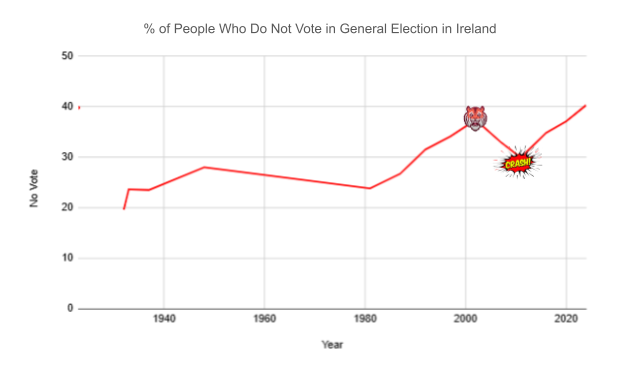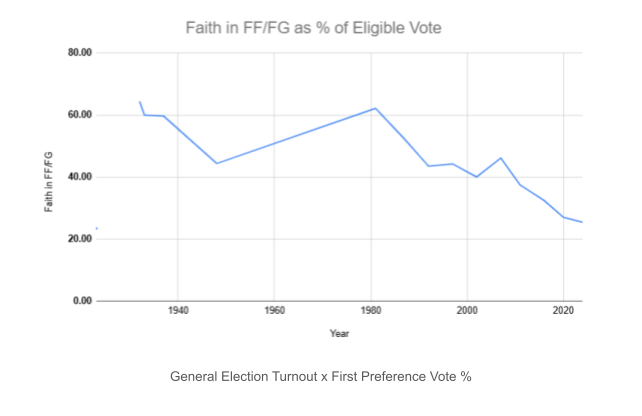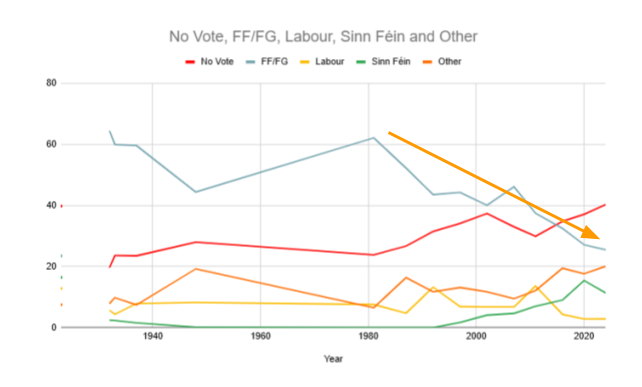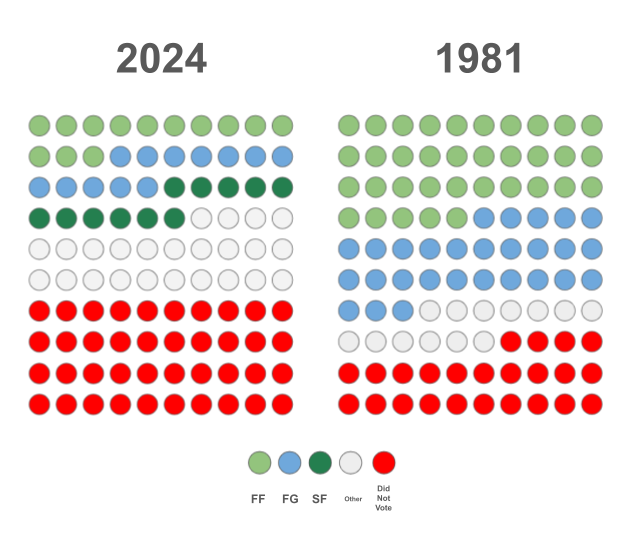40.3% of eligible voters did not vote in the 2024 Irish General Election. This is the lowest turnout since 1923. With the exception of 2011, when people were clearly irate after the economic crash, the voter turnout has steadily declined for decades. It seems that the election simply doesn’t matter to a growing cohort of Irish voters.

FF / FG have been part of government (including Confidence & Supply) since 2016, so effectively they are now two sides of the same coin. Taken together, their influence over Irish politics is dwindling – even though the media will have you believe they ‘won’ the right to govern. If half of the 40% of non-voters turned up and voted against the two Civil War parties, their influence would have waned further. They are very much reliant on the elderly vote. They know this – expect to see more young candidates (under 30) emerge over the course of the next two elections. They need to start appealing to younger voters, or face oblivion in the next 10 years.

While FF / FG continues to slide, SF and Others (SocDems, Aontu, Independent Ireland) continue to make ground, albeit slowly. The significance of the cohort that do not vote simply cannot be ignored. It is a lifeline to the Civil War parties who would otherwise be in terminal decline.

FF took a hammering in 2011 election following the economic crash and while FG benefited, they have not been able to sustain that performance and arrest the combined slide of the two main parties. Since 2016, the “Did Not Vote” cohort has been greater than the performance of the two main parties combined and this year, 2024, the non-voters outnumber those who voted for the three main parties (FF / FG / SF) – this is a staggering statistic. The future or Ireland lies in the hands of people that can’t be bothered to vote.
In 1981, FF and FG shared 81.6% of the vote on a 76.5% turnout – only in 1932 did they fair better. This 63% satisfaction with FF / FG has been in terminal decline ever since and today, the two main parties share 43% of the vote – which in reality only represents 25.5% of the electorate given that 40% don’t vote. Their combined number of voters is significantly behind the non-voter cohort. Unfortunately, in practical terms, this means nothing – the non-voter refuses to influence the outcome of the vote. They could but for whatever reason, they choose not to and the people must instead accept another 5 years (and possibly 10) of the same old same old.

To provide the best experiences, we use cookies to store and/or access device information. Consenting to cookies will allow us to process data such as browsing behaviour or unique IDs on this site. Not consenting or withdrawing consent, may adversely affect certain features and functions.